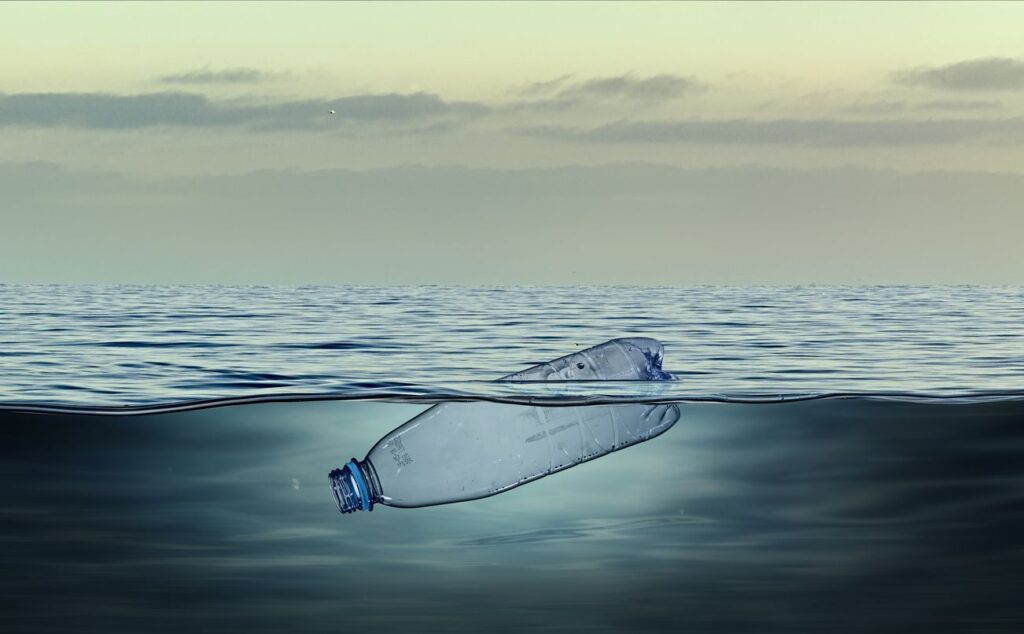Aged plastic releases more organic carbon than new plastic, whether petroleum-based or biodegradable, according to a study conducted by the Barcelona Institute of Marine Sciences. Plastic releases organic chemicals and CO2 into seawater, contributing to ocean acidification.
A new study conducted by the Institut de Ciències del Mar (ICM-CSIC) in Barcelona has revealed that the degradation of plastic under the influence of sunlight contributes to the acidification of seawater. to the release of dissolved organic carbon compounds both by the plastic itself and its additives, and to the production of CO2.
“Thanks to this study, we were able to verify that in areas of the ocean surface heavily contaminated with plastic, its degradation will lead to a drop of up to 0.5 pH units, which is comparable to the drop in pH estimated in the worst scenarios for anthropogenic emissions by the end of the 21st century”, underlines Cristina Romera-Castillo, researcher at the ICM-CSIC and first author of the study published this week in the journal Science of the total environment.
Acidification and plastic pollution are two of the biggest problems facing the oceans today. In this sense, since the industrial revolution, the increase in the acidity of the seas and oceans has made it more difficult for certain calcifying organisms, such as corals, to maintain their skeleton. On the other hand, it is known that every year some 13 million tons of plastic reach the sea, and it is estimated that some 250,000 additional tons float in the ocean.

Contents
The souring process
The sun’s ultraviolet light is the primary factor in plastic degradation and aging. This degradation gives rise to fractures that cause the plastic to break into smaller pieces, some less than 5 millimeters, better known as microplastics.
When exposed to sunlight and erosion, the plastic is “aged” and its degree of degradation depends on how long it has been exposed to these conditions. This exposure leads to a greater release of chemical compounds into the water and causes a drop in its pH.
The chemical compounds that plastic releases into seawater as it degrades can be components of the plastic itself or additives that are added to give it color or give it strength. Some of these compounds are organic acids, which is why they help lower pH.
However, as plastic degrades, CO2 is also produced, which can be emitted directly from it, or be the product of reactions that sunlight triggers in organic compounds released from the plastic. In turn, this released CO2 participates in a series of reactions that also cause the pH of the water to drop.
Differences between new and old plastic
For the elaboration of the work, the research team exposed different types of plastic (new and old) to a constant temperature and solar radiation. He then analyzed the pH of the water and the amount of organic carbon released by the microplastics following their degradation.
With only six days of exposure to the sun, a mixture of aged plastics collected from beaches released a large amount of dissolved organic carbon compounds and a significant decrease in water pH was observed. In experiments with new plastics, however, polystyrene, low-density polyethylene (LDPE) – from which bags and other containers are made – and biodegradable plastic have been used. Of these, only polystyrene (expanded polystyrene) produced a substantial drop in pH, since no significant differences were observed with the others.
“These results highlight that aged plastic affects acidification much more than new one, which is very worrying, since most of the plastic found in the sea, regardless of its type, is degraded”, concludes Romera- Castle.
ecoportail.net
Reference:
Romera-Castillo Cristina et al. Abiotic leaching of plastic contributes to ocean acidification. Total Environmental Science
